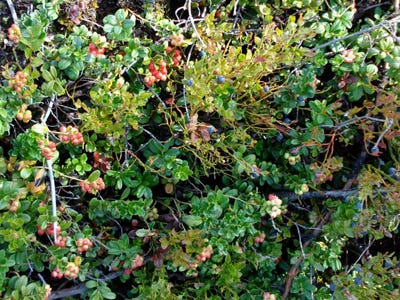
Sweden’s Every Man’s Right Is a Forager’s Dream
At the end of Sweden's long winter, the first signs of spring mark the beginning of foraging season. The Scandinavian passion for gathering goes hand-in-hand with the cultural importance of long walks in nature, a cherished family activity for city-dwellers as well as folks in sparsely-populated, wooded areas. Thanks to a tradition called Allemansrätten ("every man's right"), anyone is allowed to forage for wild foods and flowers (excepting those that are protected by law), as long as nothing is disturbed or destroyed. The right covers all public parks and forests, and even includes privately-owned land—though it excludes farms and gardens.
The concept of access for everyone is a cherished part of Sweden's national identity, as it has been for centuries. Though the term Allemansrätten originated around the mid-1900s, the philosophy of sharing the land is far older. Around 65 percent of the country's landmass is covered by forest, so foraging is a natural source of food. While the right is generous in spirit, some have capitalized on it: According to reports in TheLocal.se, an English-language newspaper in Sweden, there are many companies that fly workers in from as far as China or Vietnam to harvest the wild bounty, competing for the best mushrooms and berries with locals out looking for ingredients for dinner.
The all-access ethos isn't just limited to Sweden: similar "rights of public access" also exist in neighboring Norway and Finland, and support for the generous spirit of this right remains strong in Scandinavia. While foraging can take up an entire afternoon, I've found that the goods I discover taste twice as delicious as store-bought—after a brisk quest in the crisp outdoors, the flavor of the freshest-possible ingredients really comes to life.
What you'll need:
A basket
A mushroom knife, which has a brush on one end for brushing dirt from mushroom stalks and a blade on the other end
Long socks or pants (to avoid brambles)
Sturdy shoes
What to look for when foraging in Scandinavia:
Wild strawberries (smultron): Ingmar Bergman's famous film of the same name is actually called Smultronstället; literally, the word refers to a wild strawberry patch, but colloquially, it means a special, secret place. These fragrant, pencil-eraser–sized strawberries (pictured at left) are hard to find but well worth the effort of looking.
Where to look: Search early in summer for clusters of white flowers, which eventually become fruit.
Blueberries (blåbär): Look for bushes that are low to the ground with small, eye-shaped, dark green leaves. These berries are often cooked into a traditional streusel-topped crumb pie (paj).
Where to look: Wild blueberries sometimes grow along the side of the road and grow in plentitude in the northern region of Sweden. They are plentiful in late summer.
Cloudberries (hjörtron): These tart golden berries, which look like misshapen raspberries with big seeds, are best cooked into sylt, or jam, and are found in Northern Sweden.
Where to look: Cloudberries are found in arctic bogs.
Raspberries (hallon): Wild raspberries are much more delicate than their domesticated counterparts. These are best picked and eaten fresh immediately.
Where to look: Wild raspberry bushes grow best in full sunlight, so look for clearings in the forest.
Blackberries (björnbär): Fat, juicy blackberries grow on thorny brambles. The larger berries tend to be the sweetest. Enjoy what you find straight from the vine.
Where to look: Blackberry bushes grow in natural meadows.
Lingonberries (lingon): Lingonberries ripen after the blueberries do. Look for long clusters of round, red berries. Their flavor is reminiscent of cranberries, but with less acidity. Rårörda lingon, or raw lingonberries stirred with sugar, are a traditional accompaniment to Swedish meatballs.
Where to look: Look along the ground in late August, early September. They often grow as groundcover near with wild blueberry bushes, as pictured.
Nettles (brännäsla): Stinging nettles can cause a rash, especially before being cut. Use gloves when handling. Nettles can be cooked into flavorful soups or sautéed with pasta—their sting subsides once they've been cooked. Nettles can be found in early summer.
Where to look: Look for thick stemmed weeds with serrated-edge leaves.
Chanterelles (kantereller): Chanterelles are sautéed in butter and served on toast as a special occasion appetizer. Chanterelles can be hunted in the fall. Beware false chanterelles, which do not taste good. Use a mushroom book to identify edible fungi.
Where to look: Chanterelles appear in early June in the same spot season after season. Places to look are near roots of birches, pines, and oaks, and often times near the edges of forest trails and clearings.
Porcini (karljohanssvamp): The best hunting happens after a rainy autumn day. Dig deep to uproot the mushroom's fat foot. These meaty mushrooms can be sautéed served with local venison. Beware false porcini, which can be poisonous. Use a mushroom book to identify edible fungi.
Where to look: These brown-capped mushrooms grow around mossy pines.
Keep Reading
Continue to Next Story










